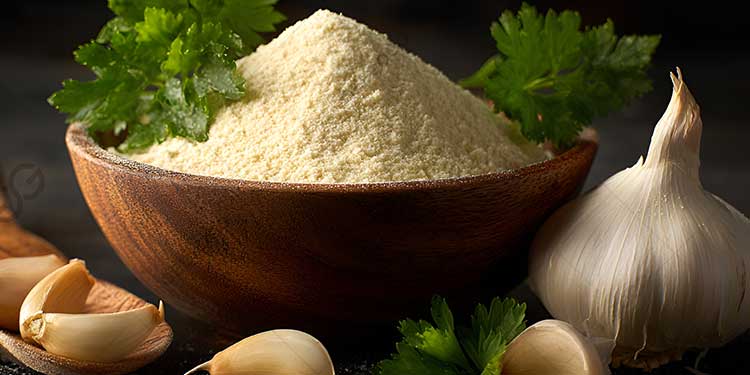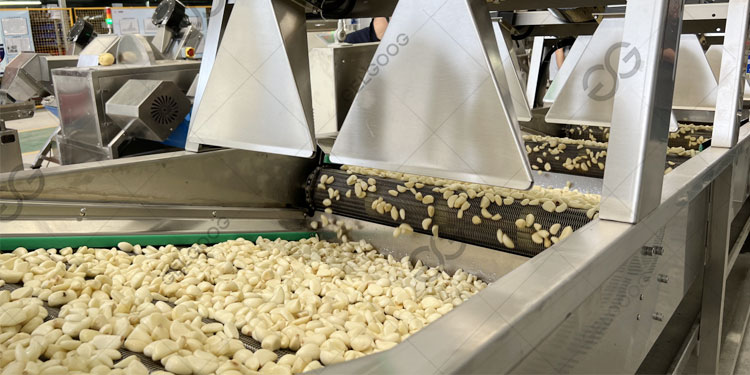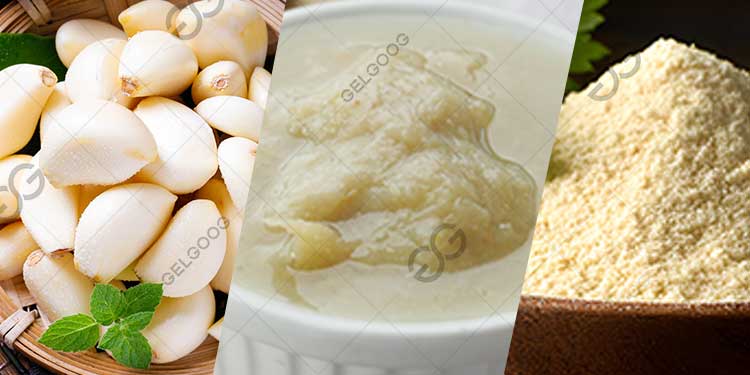
Introduction for Garlic Powder Making Process
Garlic powder is a commonly used condiment, which is popular because of its convenience and unique flavor. Garlic powder is made by converting fresh garlic into high-quality garlic powder through a standardized production process. The following will introduce the garlic powder making process in detail.
Garlic powder making process:
1. Raw material reception and clove separation
First, the fresh garlic is strictly inspected for quality and garlic that is moldy, sprouted or damaged is removed. Qualified garlic enters the clove separation process, which is crucial to the efficiency of subsequent processing.
2. Peeling treatment
The separated garlic cloves enter the peeling process. The garlic skin is removed by friction with a rubber roller or air flow impact, which can better retain the garlic flavor substances compared to the traditional water soaking method and reduce the generation of wastewater.
3. Slicing process
The peeled garlic cloves are sliced into uniform slices of 1.5-2mm. The thickness of the slices directly affects the subsequent drying efficiency and the quality of the finished product. Too thick slices will lead to uneven drying, while too thin slices may cause the loss of flavor substances. The temperature needs to be controlled during the slicing process to avoid oxidation.
4. Cleaning
The garlic slices pass through the cleaning system to remove surface residues and microorganisms. After cleaning, they need to be fully drained to reduce drying energy consumption.
5. Low-temperature drying
The dried garlic slices enter the drying system. Modern factories mostly use segmented hot air drying: 60-65℃ in the early stage to quickly remove surface moisture, 50-55℃ in the middle stage to slowly dehydrate, and then 45-50℃ in the later stage to ensure uniform drying. The whole process needs to be precisely controlled, and the final moisture content should be ≤6.5%.
6. Fine grinding and grading
After cooling, the dried garlic slices enter the grinding system to obtain garlic powder of different finenesses of 80-200 mesh. The temperature must be controlled not to exceed 40℃ during the crushing process to avoid volatilization of flavor components. Finally, the particle size is graded by a vibrating screen.
7. Packaging and storage
The finished garlic powder is packed in aluminum foil composite bags or nitrogen-filled packaging and stored in a cool and dry warehouse (relative humidity ≤60%, temperature ≤20℃).
Key considerations during the garlic powder making process:
1. Raw material quality control: Fresh, mildew-free, and non-sprouted garlic raw materials must be used. Changes in enzyme activity in sprouted garlic will affect the product flavor and shelf life.
2. Temperature control throughout the process: The temperature must be strictly controlled from slicing to grinding, especially the drying stage must not exceed 65°C to avoid the decomposition of active substances such as allicin.
3. Environmental standards implementation: The production workshop should meet food-grade hygiene requirements, and the equipment should be cleaned and disinfected regularly by CIP to prevent microbial contamination.
4. Anti-oxidation measures: Timely treatment after peeling and slicing, and appropriate amount of food-grade antioxidants (such as vitamin E) can be added if necessary. Oxygen should be isolated as much as possible during the grinding and packaging process.


Leave a Reply